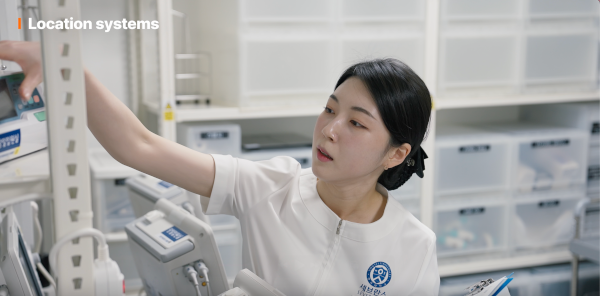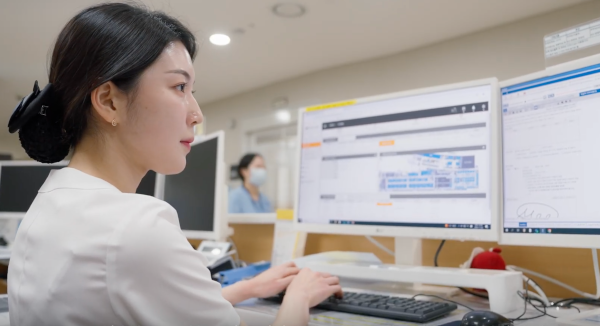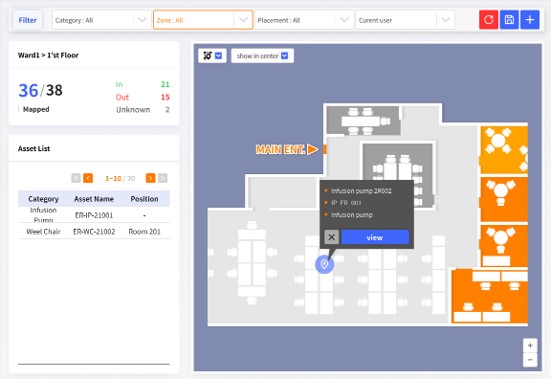How RTLS Asset Tracking helps Hospitals and why is it the right time to start ?
- AuthorElodie
- DateJun 04, 2025
- Views1327
As hospitals around the world accelerate their digital transformation, real-time asset tracking is becoming a foundational element in modern healthcare operations. Using IoT tags and Real-Time Location Systems (RTLS), hospitals can monitor the movement of medical and non-medical assets such as infusion pumps, wheelchairs, and diagnostic tools. But the benefits go beyond inventory: asset tracking directly addresses global workforce shortages, boosts operational intelligence, and supports smarter patient care.

A Strategic Response to Systemic Challenges
In many regions, including Saudi Arabia, the healthcare system is under strain. The Kingdom faces a critical shortage of nurses—only 2.1 per 1,000 population, far below the OECD average—and a high annual turnover rate nearing 20%. To compensate, hospitals rely heavily on foreign nurses, who comprise 90% of the workforce. In this context, minimizing non-clinical tasks and improving resource visibility is not optional—it’s essential.
Studies show that nurses spend up to 10% of their time searching for equipment. Not only does this detract from patient care, but it also costs hospitals significant resources. For a hospital employing 400 nurses at an average salary of $1,000/month, that’s easily $14,000/month lost to inefficient asset retrieval alone(counting week ends, 3 shifts/day). At the same time, 10–20% of mobile assets are lost or stolen during their lifetime, at an average loss of $3,000 per item. With 10,000 tracked assets, this translates to $3 million in avoidable costs over time.
By implementing RTLS-based asset tracking, hospitals can:
- Save time and increase staff efficiency, redirecting effort to patient care.
- Reduce asset loss and theft by over 50%.
- Improve asset utilization, raising it from a typical 50% to the industry target of 70–80%.
- Support smarter procurement and maintenance strategies, using data analytics and heatmaps.
Where Are Hospitals on the Digital Maturity Curve?
According to Gartner’s “RTHS Journey”, hospitals move through three levels of digital maturity:
- Level 1 – Reactive: Disjointed workflows, siloed applications, and low operational visibility.
- Level 2 – Managed: Coordinated workflows, interoperable systems, and an enterprise view of the patient.
- Level 3 – Proactive: Real-time intelligence, system-wide orchestration, and autonomous operations.
Asset tracking is a key enabler in the transition from Level 1 to Level 2, where hospitals begin to integrate data across departments and gain a clearer situational view. It is also a prerequisite for entering Level 3, where pervasive operational awareness drives system-wide optimization.

Why Now?
Gartner’s 2024 Hype Cycle for Real-Time Health Systems (RTHS) reveals that IoT for Healthcare are just emerging from the Trough of Disillusionment—meaning the hype has settled, and the technology is entering a phase of practical, value-driven adoption. Meanwhile, asset-related technologies like RTLS Operational Command Centers and Process Automation are on the Slope of Enlightenment, heading toward widespread productivity.
This timing is ideal. The technologies are mature enough for stable deployment, yet early enough that hospitals implementing them now will be ahead of the competition.

A Future-Proof Investment
Incorporating asset tracking into hospital infrastructure isn't just a tech upgrade—it’s a strategic decision. In most regions where staffing shortages and operational inefficiencies are both urgent and costly, RTLS solutions represent an opportunity to modernize without overhauling clinical staff or rebuilding facilities.
It’s not just the right time… it’s the smart time!
Check how People and Technology’s solution looks like : https://www.youtube.com/watch?v=4jJsd-Qiesc
Contact sales@pntbiz.com to know more.









